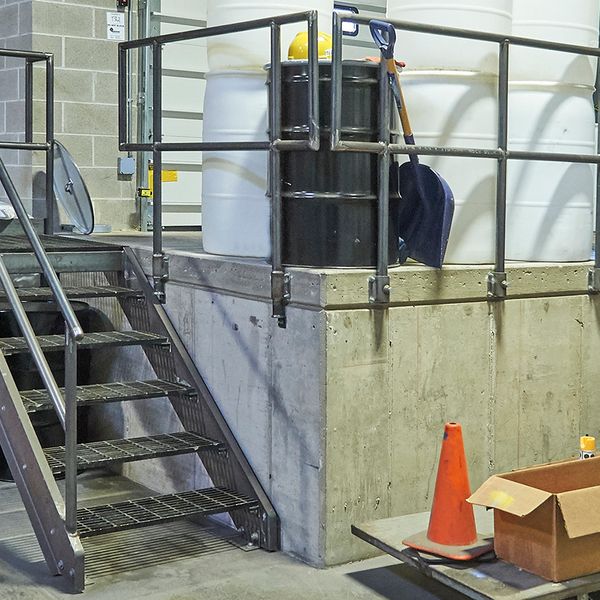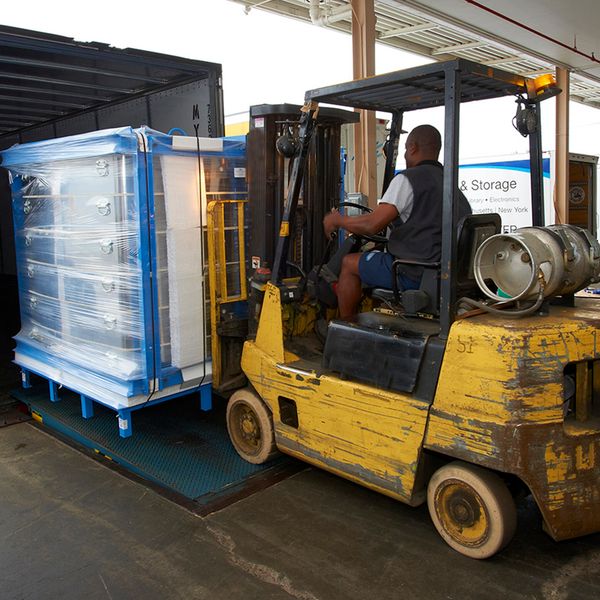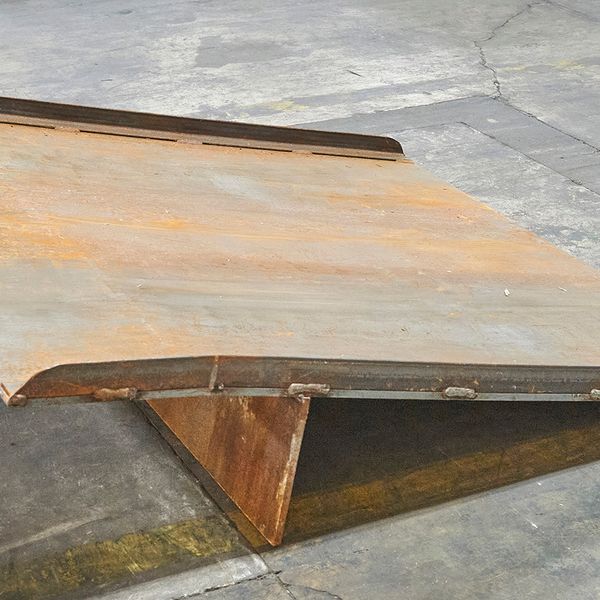Why you need guardrails on open dock platforms
OSHA provides an exception for fall protection on open dock platforms, but only during active loading or unloading operations. Employers must provide fall protection for other activities. This issue arises with loading docks that consist of one continuous open platform. These platforms may be used to accommodate railroad cars or flatbeds, but they can also handle standard semi vans.
Open docks are more common in warmer climates but they can appear in any part of the country, particularly at older buildings or where railroad cars get unloaded. If the dock is four feet or more above the ground, then workers on the dock require fall protection.
The OSHA regulation at 1910.28(b)(1)(iii) provides an exception from need for fall protection along unprotected edges, but it’s very limited. First, it applies only when the loading or unloading operations are in process. Second, only authorized employees who have been trained under 1910.30 may access the dock during those operations.
Limits of the exception
To use that exception, the employer must determine that fall protection is not feasible during certain work operations. For example, loading or unloading operations may be impossible with fixed guardrails in place. As noted, however, the exception applies only while such operations are ongoing, and only trained employees can access the platform during those operations. Once those operations are completed and other workers gain access to the platform, fall protection is required.
In the preamble to the Walking-Working Surface regulation, OSHA clarified that exception by noting that “fall protection does not interfere with performing tasks such as maintenance, cleaning, and similar tasks; therefore, when workers are performing these tasks, employers must provide fall protection.”
Fall protection options
Employers may choose the best fall protection option for the situation, but the most likely options for open docks are travel restraint systems or guardrails. For more information on choosing fall protection systems, see our article Know the difference between fall prevention and fall protection.
A travel restraint system can prevent an employee from stepping off the edge, but it requires an anchor point. A fixed anchor might not allow reaching all areas of the dock, and employees using the system would require training. They might also need reminders and encouragement to hook up when going on the dock for just a few minutes, especially if they aren’t planning to approach the edge.
To avoid those challenges, many employers install removable guardrails. These systems typically use brackets mounted below the platform edge, allowing for removal of one or more guardrail sections to facilitate loading or unloading. Once those operations are complete, replacing the guardrail sections provides fall protection along the entire platform. Other workers can then clean or perform other tasks on the platform without using personal fall protection.
Key to remember: Employers with open platform docks might not need fall protection during loading and unloading operations, but the dock does need fall protection during any other activities.




















































